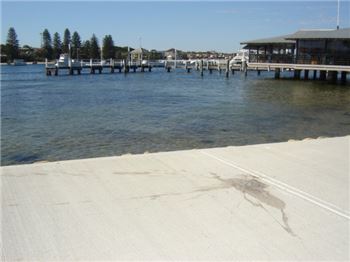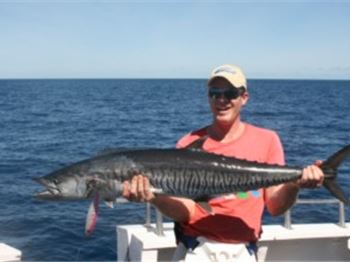Getting into the zone: snapper and star sinkers explained
It's easy to view sinkers simply as a lump of lead on the end of your line, used to get get bait to the bottom of the water you're fishing. If you want to break it down to its simplest explanation then yes, as the name implies, that is all a sinker does. There is more of a science to weighting your line though and this is why sinkers, or leads as they're also called, are designed in varying shapes and weights. Different sinkers achieve different purposes which is why so many options are available in your local tackle store.
A range of factors need to be taken into account when tying a sinker on to the end of your line, this evaluation becomes second nature when you've fished enough because by that time you are familiar with which surroundings require what sinker, but when you are first starting out sometimes it's not that straight forward.
Some of the factors you may need to take into account can relate to the depth of water you are fishing in, the strength of a rip or current present, whether you are surf or rock fishing and whether you want your bait to sink straight to the bottom or slowly drift down.
Not only that but due to the different feeding habits fish have, and the way you need to present your bait for them, this can also influence the type of sinker you end up choosing.
This series of articles looks at six basic leads that can be used for fishing - snapper, star, bean / ball, burley cage, split-shot and spoon sinkers. Each of these sinkers has certain benefits over each other which can provide advantages in different situations potentially meaning the difference between catching or not catching fish.
SNAPPER SINKERS
Snapper leads are primarily designed and used for boat fishing. Their shape is elongated and pointed, like a grossly out of shape diamond, and they have a ring at the top to tie your mainline to. This design helps the sinker drop straight down as opposed to fluttering, spinning or otherwise having its direction influenced by the flow of water which other shapes may cause it to do.
The sinkers come in a range of sizes from very light weights for skippy or whiting fishing through to 48 ounce / 1.3kg bricks which are used for fishing very deep water or strong currents.
When selecting the right snapper sinker a good start is to evaluate the depth of the water you are fishing in, the speed your boat is drifting or the strength of the current underneath you if you are anchored. The larger any of these factors are, the larger your sinker will need to be. 
Snapper sinkers doing their thing...
STAR SINKERS
Star sinkers are generally used for fishing areas with a sand bottom and in particular when beach fishing. Their shape is like an upturned pyramid with a point at the bottom and the flat part at the top which has a brass loop or swivel molded into it for your main line to be tied to.
One benefit of using these sinkers is as they are moved around under the water by the current or impact of the surf its edges quickly bury themselves and anchors your sinker to a set spot. This can help you keep the bait in a gutter, away from a section of reef you don't want to get snagged on or conversely close to a section of reef you think might be holding fish. Also the increased tension that comes from having your line fixed to a spot in the sand can help give you a better feel for any bites or hits you may be receiving.
On the flipside you may prefer to have your bait moving around to increase its chances of being found or to make it appear a little more life-like. If this is the case then try a different sinker like a ball or spoon sinker.
When it comes to choosing the right sinker look at the amount of water being moved around by the current, the size of the swell you are fishing in or the size of the bait you are using. As with snapper sinkers you will need to increase the size of your star sinker based on these characteristics as the larger they are the more anchoring your sinker will need to achieve.

Tips for better casting distances
Not getting the casting distances you want? This article provides a few pointers that can help maximise your effectiveness in this area of fishing.





